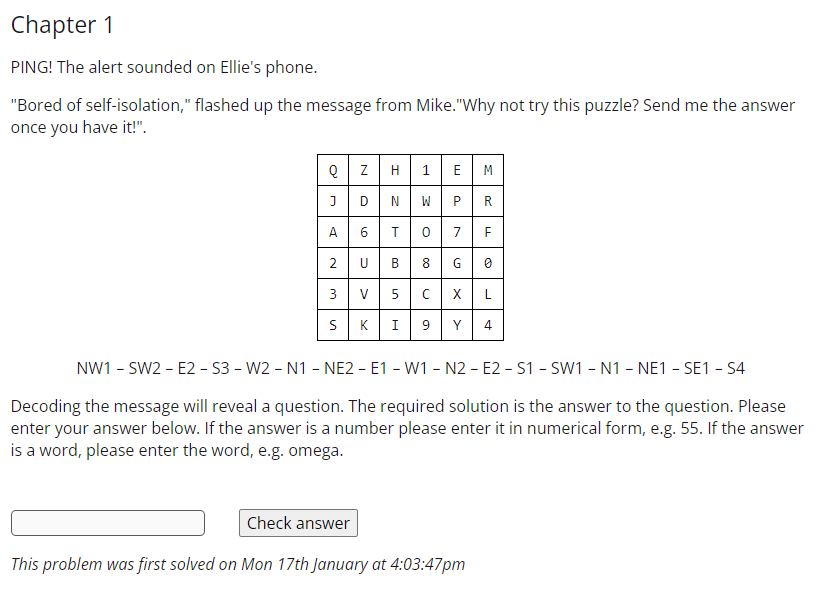
Today we solved the first three puzzles from The Alan Turing Cryptography Competition 2022. You can see a sample archived competition here.

Today we solved the first three puzzles from The Alan Turing Cryptography Competition 2022. You can see a sample archived competition here.
We were inspired by this Numberphile video by Neil Sloane today.
Starting with 2 ones, what is the maximum number you can place on an infinite grid according to the rule:
“You can place a number if all the numbers immediately around it add up to itself”
Here is a way to get up to 4:

But then we are stuck as there is nowhere to put the 5. Can you do better than 4?
You can choose where to place the 2 ones to start with, for example:
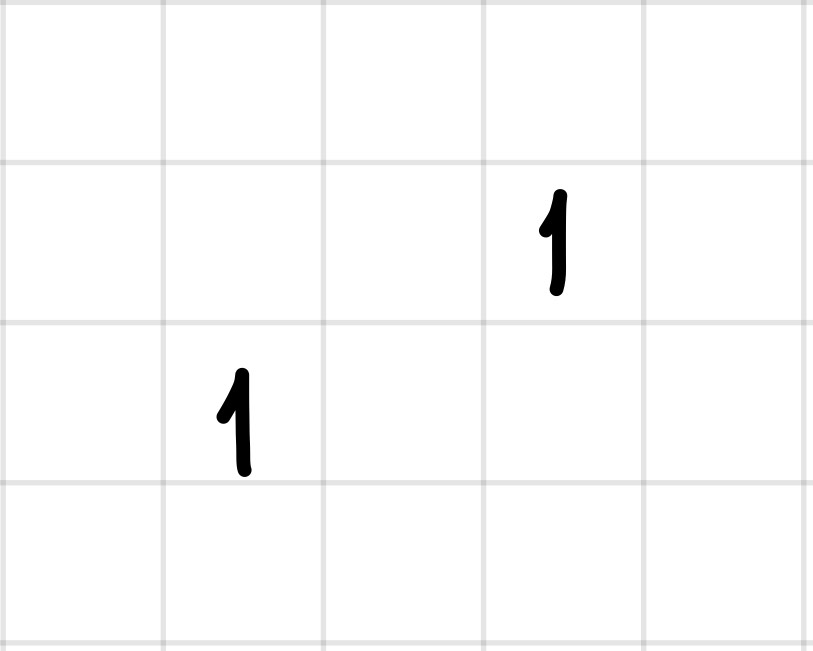
or
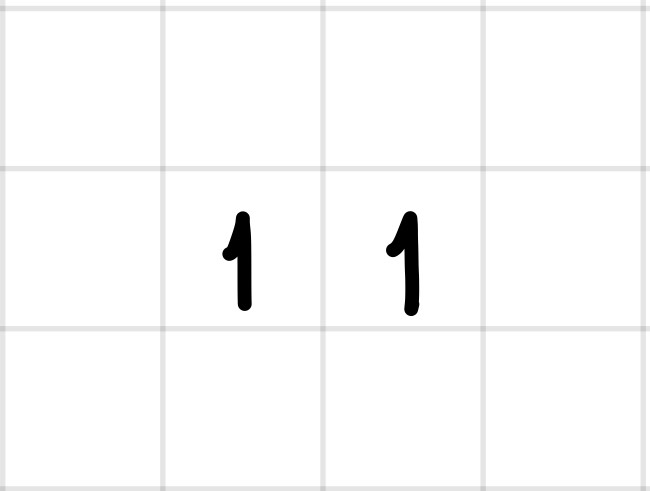
This puzzle can be tried with any number of 1s to start with.
What is the maximum number you can place starting with three 1s?
If the maximum number you can reach is a(n) for n starting 1s, an interesting question is what is the best lower bound we can find for a(n).
Imagine this diagram continuing …
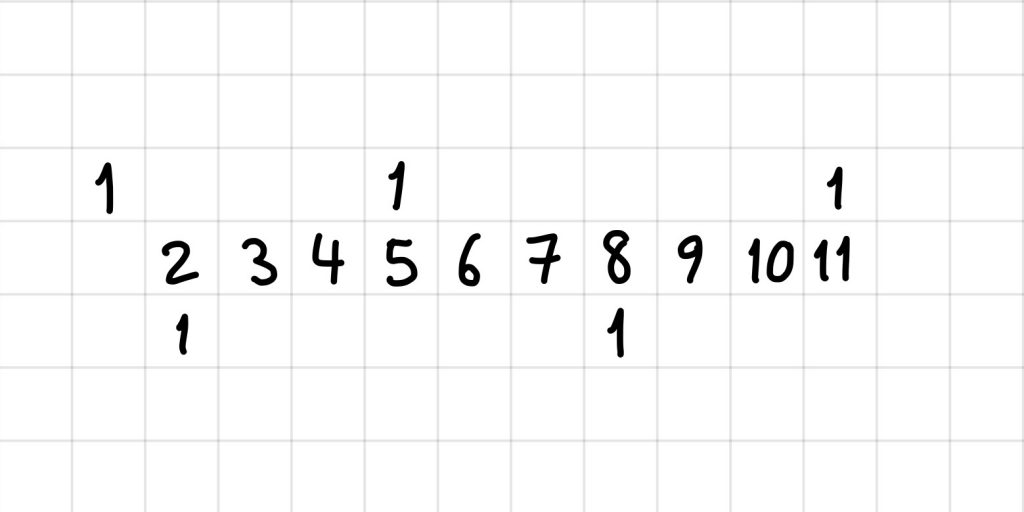
If we split it into sections we have demonstrated that a(n)>=3n-3
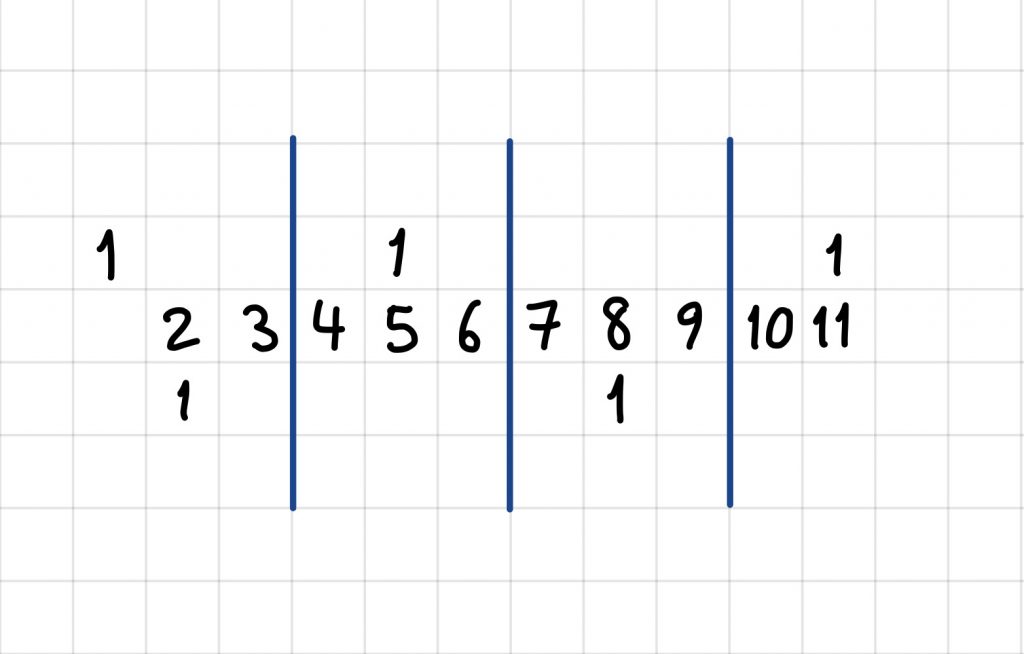
Can you find a higher lower bound for a(n) by drawing a different pattern that would continue indefinitely?
Today we explored one of the amazing ways that pi crops up where you wouldn’t expect it.
We were inspired by this video to write a program in Trinket that simulated a random walk.
The rules are that you start at the origin and toss a coin. If you get a Head you go to the right by one, if you get a Tail you go to the left by one. If you did this for say 1000 steps, 1000 times, the average final position would be 0. But what would if we took the positive distance from the origin at each stage and averaged those values? It involves pi! Watch the video for more info.
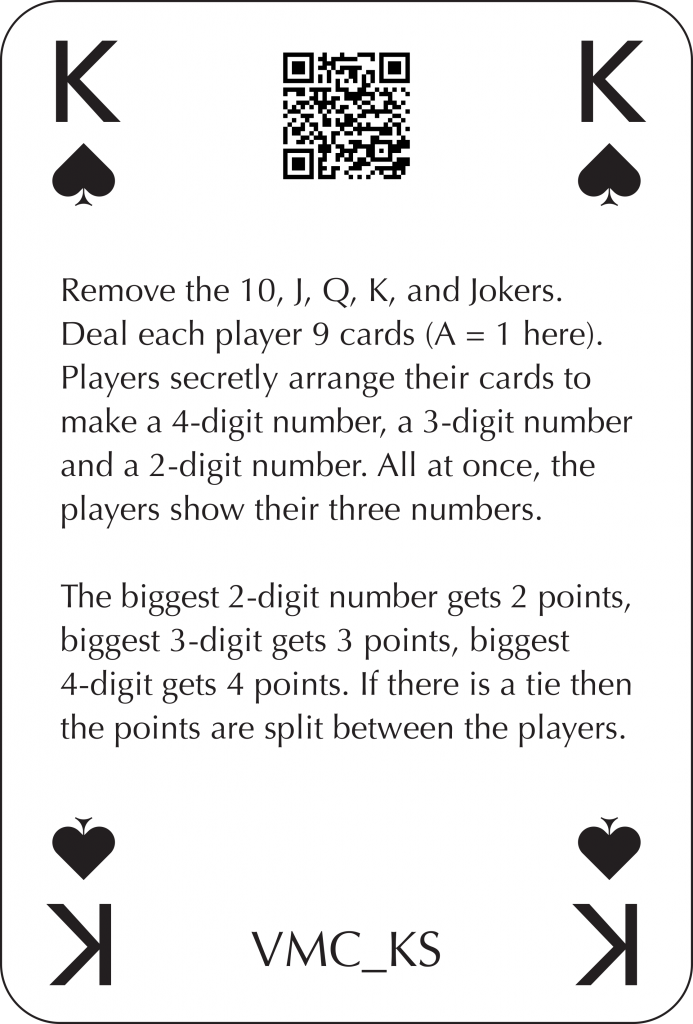
Today we played this game from our SAMI Virtual Maths Camp Cards. An interesting variant is to turn it into a pure strategy game where everyone has just the numbers 1 to 9.
Today we looked at three conjectures – one was easily proven false, one took some computer power to decide, and one … no one knows …!